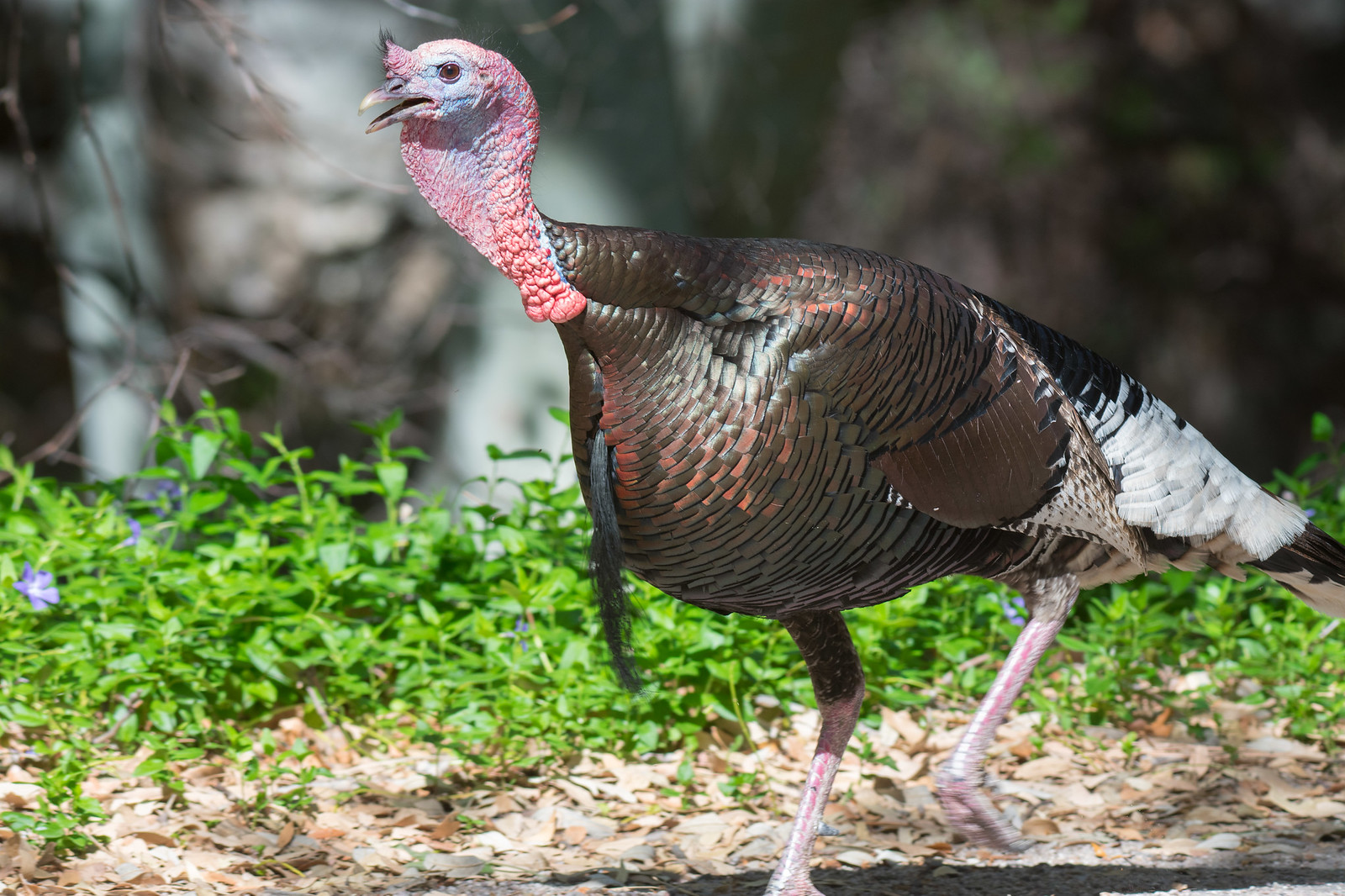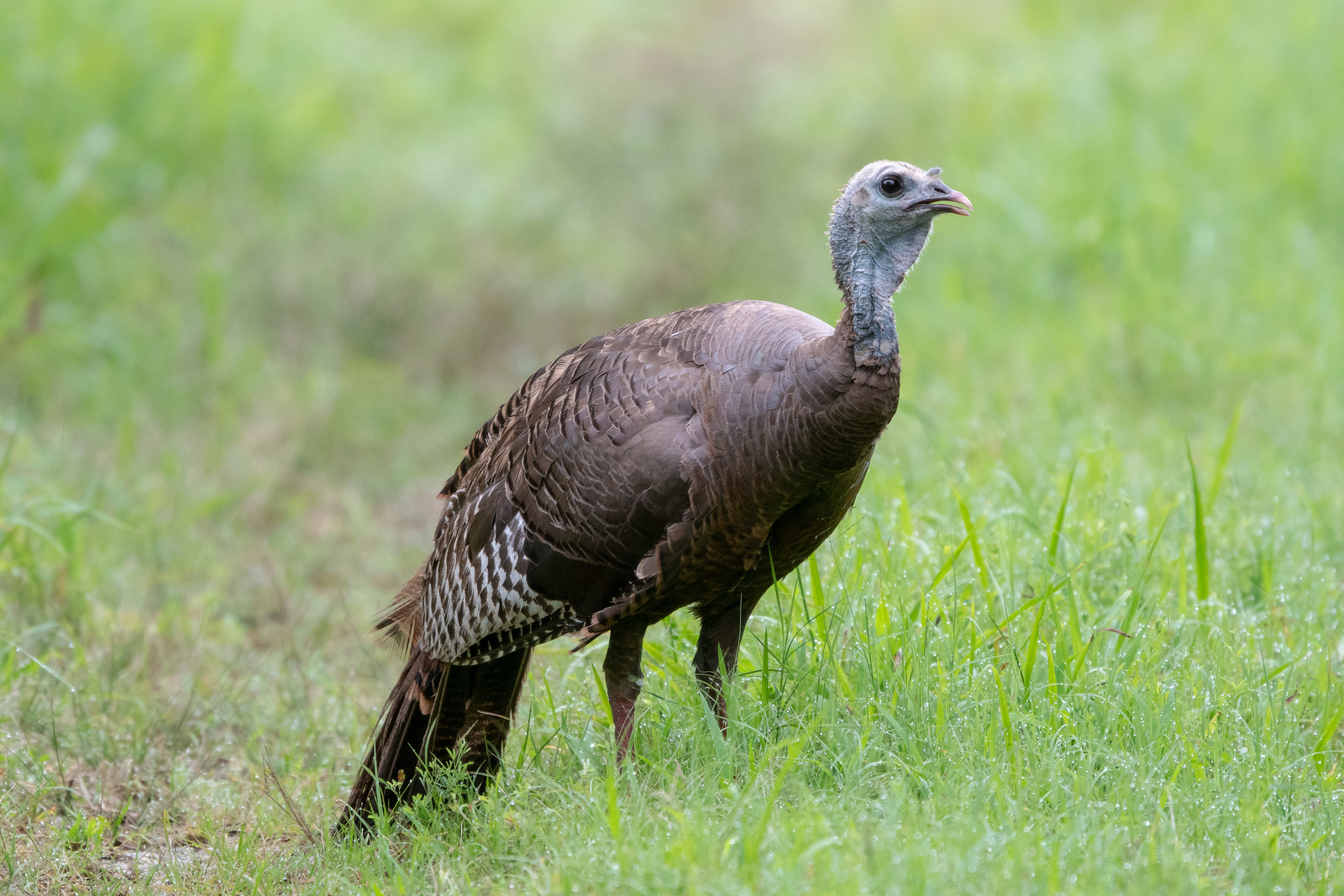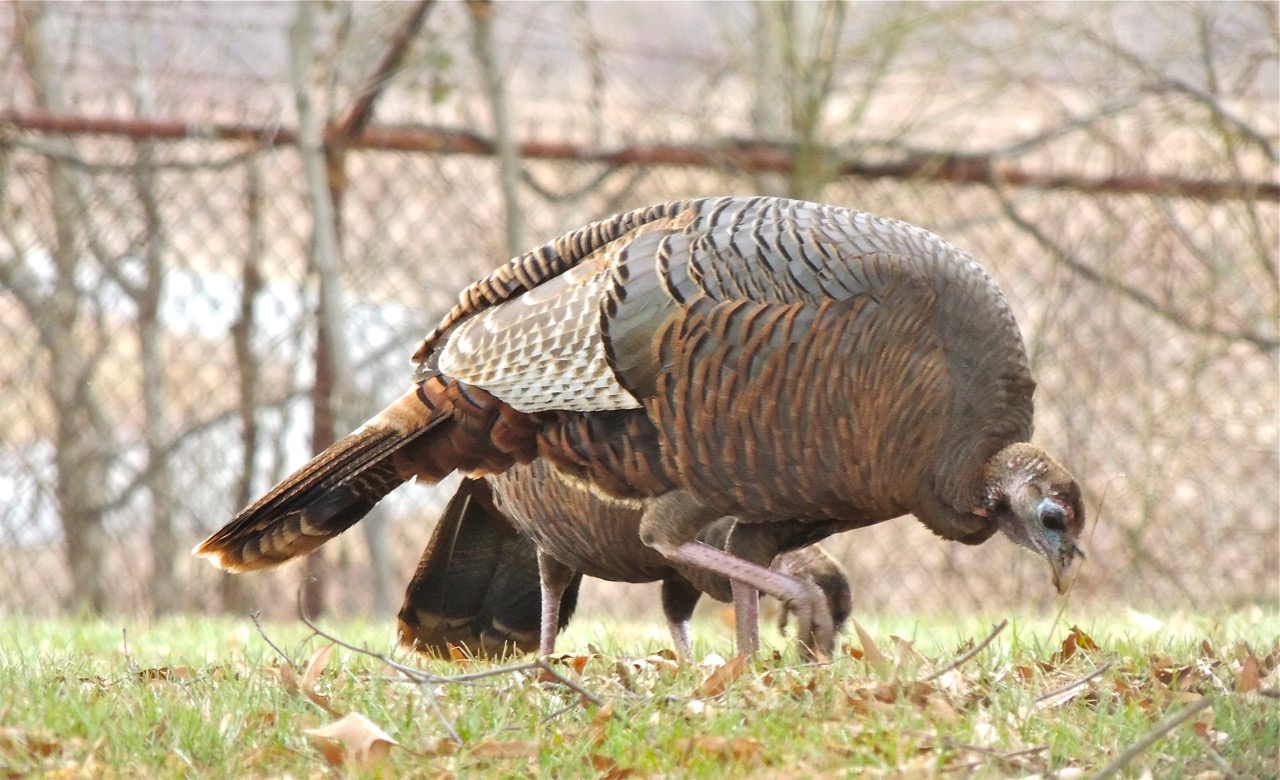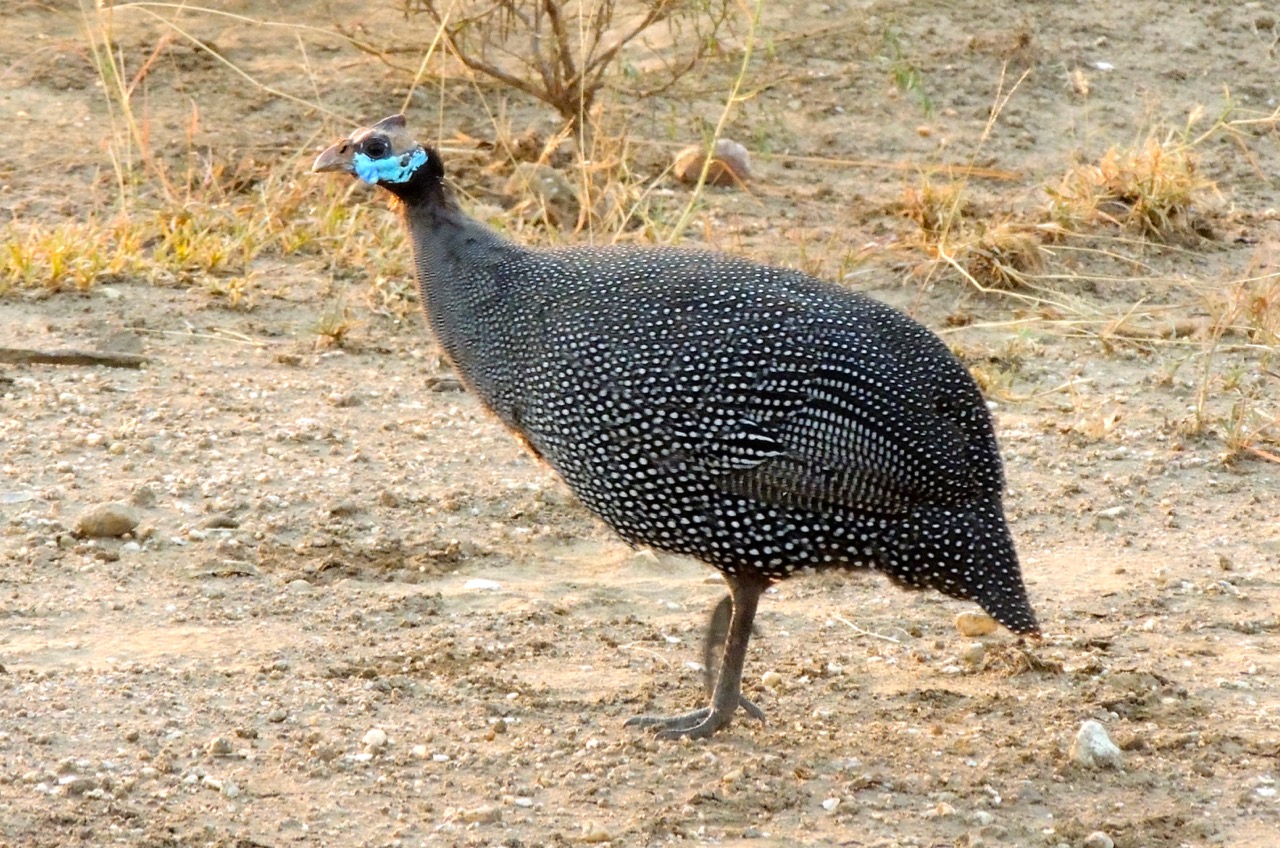| Infrequently Seen |
Wild Turkeys breed in the Washington metro area. They usually are secretive birds, and Monticello Park is too small to allow them to find adequate hiding places. They are more likely to present when few people are around.
Where to See Them in the Park
Sightings of Wild Turkeys are rare at Monticello Park. A few sightings have occurred near the fence on the ridge, near the Kust property. Others have been reported in the surrounding neighborhood. You are more likely to see Wild Turkeys at Occoquan Bay National Wildlife Refuge, both near the entrance kiosk and in various places within the refuge.
Physical Description

Wild Turkeys are huge, and you are unlikely to mistake one for any other species. Turkeys are brown birds with naked heads. The males weigh more than 16 pounds. The wattles (pieces of skin) on the male's head can change color, sometimes showing various shades of blue and red.

The fleshy protuberance on his forehead is called a snood and can be of different lengths and degrees of stiffness. He also has a beard, which is a tuft of hairlike feathers hanging from his breast, resembling the tassle on a graduation hat.

Females and immatures look like smaller and duller versions of males. They weigh slightly more than 9 pounds, and the bare skin on their head usually looks grayish. They lack or have significantly smaller snoods and beards.

At night, Wild Turkeys roost in trees. During the day, they are most likely to be walking on the ground, looking for food.
Vocalizations
The call of the male Wild Turkey is the familiar gobble, which is loud, shrill, and throaty. It can be heard from a considerable distance. Both males and females utter much quieter cackles and clucks.
Hear the vocalizations and sounds of the Wild Turkey.
Notes

Both the common and scientific names of turkeys are the result of considerable confusion. Turkeys were confused with guineafowl from Africa who were sold by Turkish traders. Guineafowl and turkeys are in different families.

The Wild Turkey was domesticated by native people in North America. Another species of Turkey lives in parts of Central America. The Ocellated Turkey is more colorful than the Wild Turkey, and it has never been domesticated. Ocellated Turkeys have prominent ocelli, or eyespots, on their feathers. Turkeys are in the same family as peafowl, and peacock feathers also have ocelli.
Origin of Names
Common Name: Wild to distinguish it from domestic turkeys. Turkey after the country of Turkey. Turkeys and guineafowl were called Turkey birds, because they were sold by Turkish traders, even though the birds have no other connection with the country.
Genus Name: Meleagris is Greek and Latin for a guineafowl, from the resemblance of turkeys to guineafowl.
Species Name: Gallopavo comes from the Latin gallus, which means cock, and pavo, which means peafowl.
Wild Turkey video footage
Return to the Index
